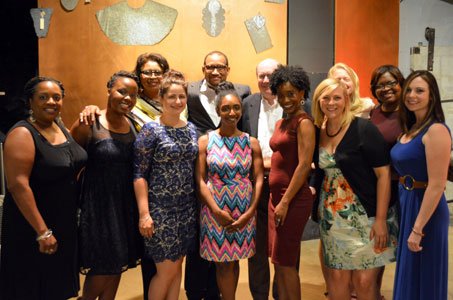BALTIMORE — Eugene arrived at the Children’s Guild when he was in third grade. He was very aggressive, always fighting with classmates and demonstrated a high level of anxiety. He had the perception that everyone was out to get him, officials say.
Joey came to the foster care organization’s Group Living Academy when he was 12. Guild officials say that he possessed a spirit to persevere past his challenges and his four years there prepared him for the success he ultimately became.
Both of those young men are among the many foster children who, despite initial challenges, have thrived in the environment provided by programs operated by the Children’s Guild
Nichole Boswell, the executive director of the Children’s Guild’s Treatment Foster Care program, said help is provided to those who have complex problems and are difficult for a regular foster home to manage.
To recognize the challenges and successes, the Children’s Guild adopted a program to reward foster parents they’ve recruited and trained to help provide children with activities that encourage their talents, Boswell said. “The parent appreciation ceremony has been around since 2005 and for the past five years we’ve tried to do things to recognize our foster parents.
Parents and others gathered at the Baltimore Museum of Industry on May 28, 2014 to honor those who serve by taking in children who may have more needs than others.
“These parents represent the foundation of what America was built on,” Boswell said. “Our parents require a higher level of commitment and dedication and we’re rewarding them.”
What makes the tasks for the parents challenging is that many of the children have experienced abuse and neglect, and they exhibit disordered behaviors, Boswell said.
Children in Treatment Foster Care need a living environment that engages them with people who are committed to them and people who model what it means to be a good person and to live a good life, she pointed out.
“The Children’s Guild provides a lot of training on how to cope with the various changes that you and the child face in life,” said Aaron Wilson, a single parent who gained custody and guardianship of one young man five years ago and, earlier this year, took on another child. “They have a whole team that supports you and the child and it lets you know that you’re not going at this alone. The program is great because, unlike [other foster care programs] the Children’s Guild makes sure that they are always with you.”
The program serves children from birth to age 21 with an emphasis on children nine to 18 who are emotionally disturbed and/or delinquent; who need interim placements after discharge from acute hospitalizations or residential treatment; or who need intensive services that can not be served effectively in a group home, a therapeutic group home or traditional foster care. Permanency planning includes special needs adoption and family reunification whenever possible, according to Boswell.
To enroll a child, a placing agency representative is required to mail referral packets to The Children’s Guild, which the director of admissions reviews to determine if the student meets the admissions criteria.
Boswell says if the referral is judged to be acceptable, the student and placing agency representatives are invited to visit the group living program to determine if the placement is appropriate, and if the placement is deemed acceptable, an admission date is established.
“I grew up not having a lot and I had a single parent who was disabled,” Wilson said. “But, my mother showed me that whatever it is that you may be going through, you may still be successful.”
Wilson, 28, says that it’s important for young parents to get involved because they are in a better position to relate to teens in foster care.
“I’m a young parent and we need a lot of younger foster parents,” he said. “We need a lot of younger foster parents because it’s hard for someone in their mid 50s or 60s to relate to young children.”
